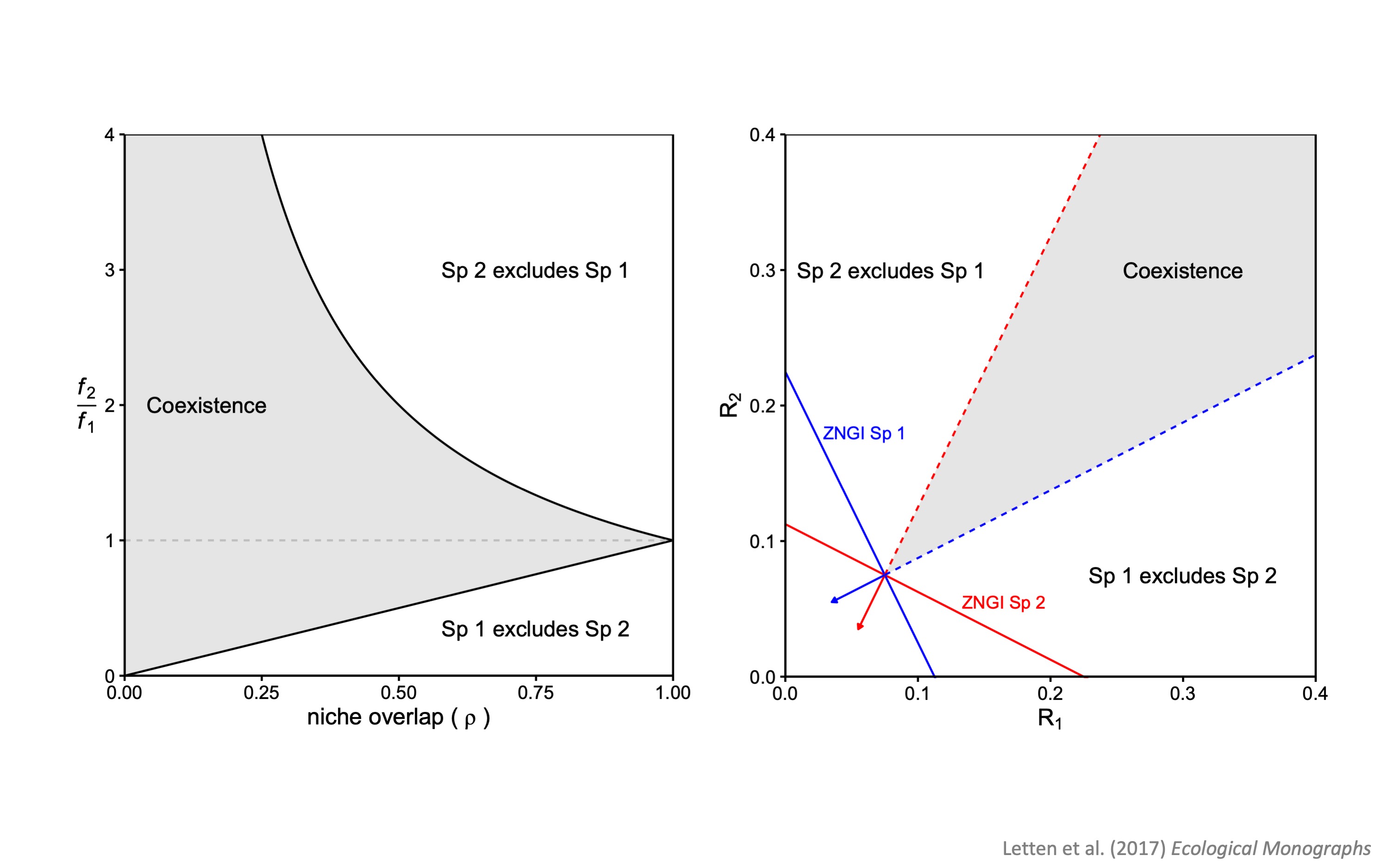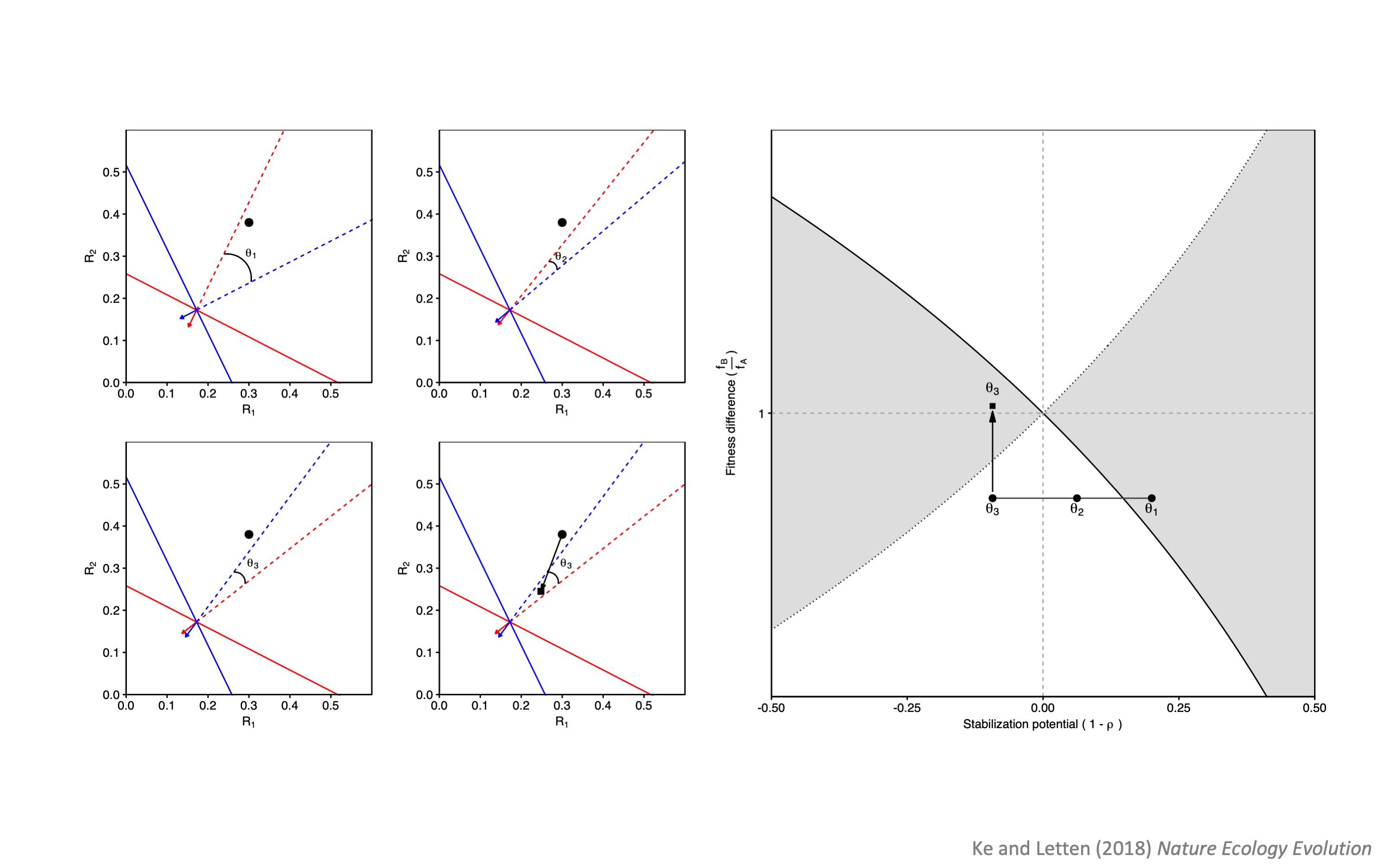Back
Synthesizing coexistence theories


When developing models to describe competitive interactions, two approaches are broadly applicable to various organisms. Some ecologists adopt a phenomenological approach, which seeks to capture an aggregated measure of the negative effects species have on each other and does not require full knowledge on how species compete (i.e., Lotka-Volterra models). In contrast, others adopt a mechanistic approach, which attempts to gain a highly resolved understanding of the competitive process by directly modeling the limiting factors underlying competition (e.g., consumer-resource models). Despite shared goals, little communication and translation of governing principles across the two perspectives preclude further conceptual advances at their interface.
We have made an attempt to integrate these two approaches. We focused on modern coexistence theory, a prominent theoretical framework mainly based on phenomenological models, which recognizes stabilizing (i.e., increasing species’ niche differences) and equalizing (i.e., decreasing species’ fitness differences) processes as two higher-level ecological forces maintaining coexistence. By linking modern coexistence theory with a consumer-resource model, we have demonstrated that mechanistic models could provide an explicit connection between causal mechanisms and emergent phenomena. Specifically, we have shown how changes in resource supply and consumer traits translate into stabilizing and equalizing forces that either leads to coexistence (Letten et al, 2017, Ecological Monographs) or priority effects (Ke and Letten, 2018, Nature Ecology and Evolution).
In recent collaborations, we are digging further into the details of calculating the niche and fitness components of modern coexistence theory. In particular, we are studying how different definitions give different interpretations of the underlying mechanisms that shape species coexistence and relative abundance. Furthermore, with collaborators we are also incorporating metabolic theory into our synthetic framework, thereby linking the effects of temperature on organismal performance to competitive interactions and biodiversity.


